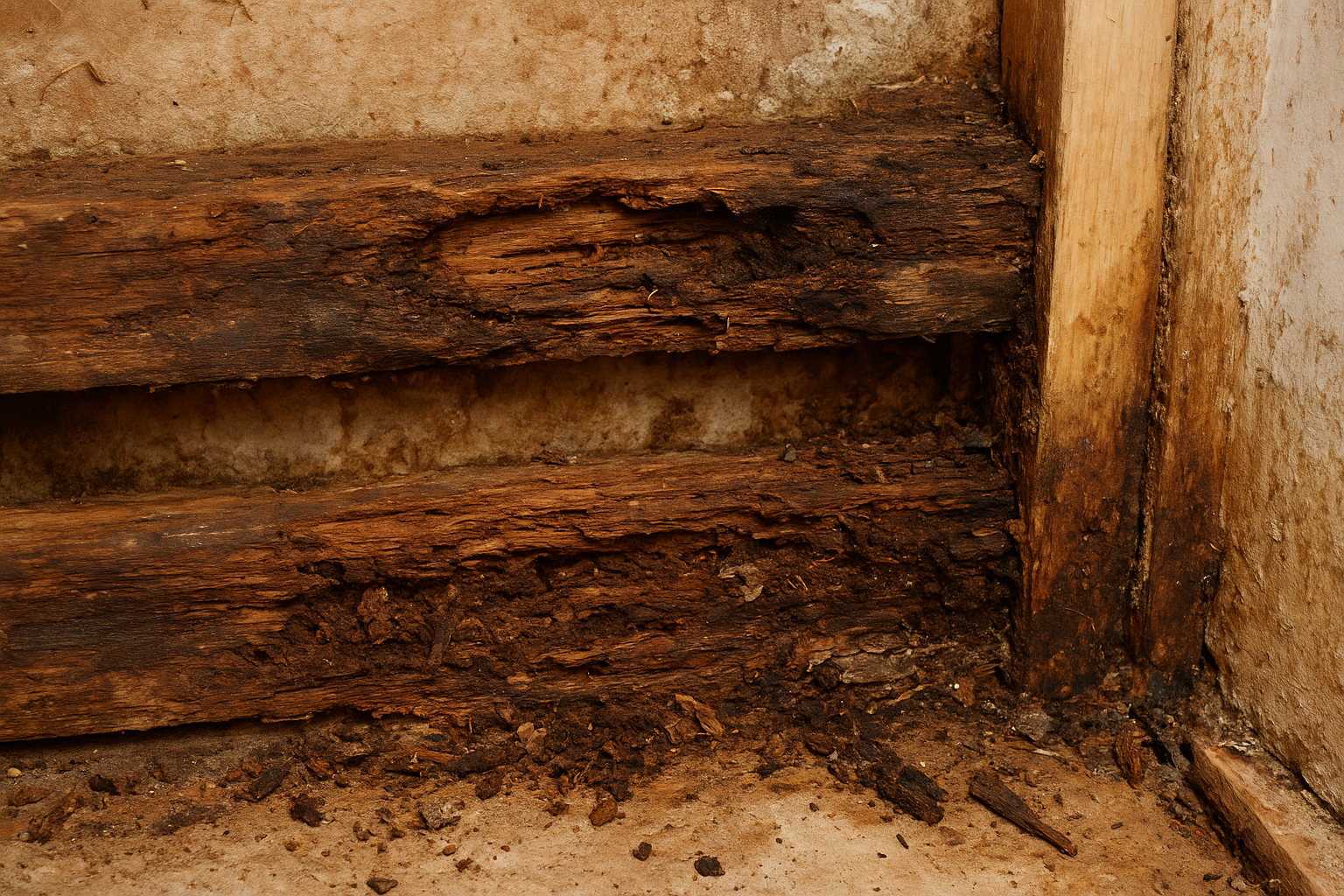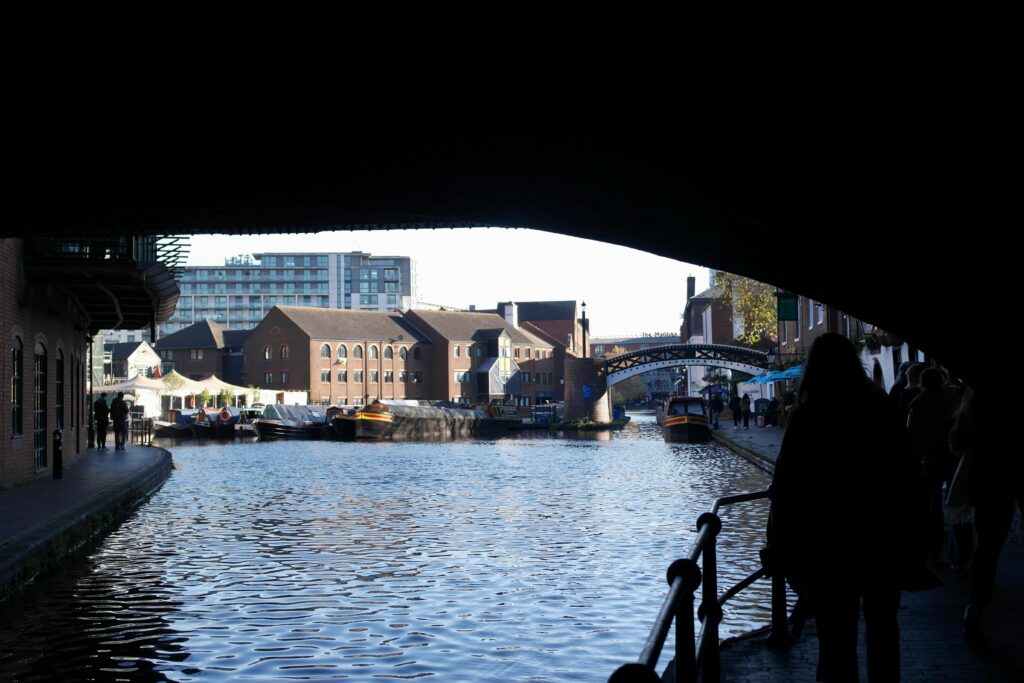
Will Wet Rot Prevent You From Selling Your Home?
When you put your home on the market, the last thing you want is a hidden issue like wet rot derailing your sale. Wet rot is a common form of timber decay that occurs when wood is exposed to prolonged damp conditions. Although it’s not as aggressive as dry rot, it can still cause major headaches for sellers. From scaring off potential buyers to lowering your property’s value, wet rot is something you can’t afford to ignore.
Understanding wet rot
Wet rot is caused by a group of fungi that thrive in damp timber, with Coniophora puteana (cellar fungus) being the most common culprit. The fungus breaks down the cellulose in wood, weakening its structure and eventually making it unsafe to use for support.
Unlike dry rot, which can spread across brickwork and plaster, wet rot usually stays within the damp wood where it started. That said, if the source of moisture isn’t resolved, the problem will continue to get worse.
Timber found in roofs, windowsills, floorboards, and basements is most at risk, especially in older properties or those with poor ventilation.
Spotting early signs of wet rot
Catching wet rot early makes a huge difference. Here are some of the most common warning signs to watch out for:
- A persistent damp or earthy smell
- Timber that feels soft, spongy, or crumbles when touched
- Dark patches, stains, or a bleached appearance on wooden surfaces
- Cracks that run along the grain of the wood
- In advanced cases, visible fungal growth
Even if only a small patch of wood looks affected, there could be more extensive hidden damage beneath the surface.
Wet rot vs dry rot
Homeowners often confuse wet rot with dry rot, but the two are very different:
- Wet rot needs a constant source of moisture (usually more than 50% moisture content) and stays confined to the affected timber.
- Dry rot can grow at much lower moisture levels (20–30%) and can spread quickly across walls, ceilings, and other materials.
Both types of decay are serious, but dry rot tends to spread faster and cause more expensive repairs. However, wet rot is still a red flag for buyers and surveyors.
Why does wet rot develop?
Wet rot is always linked to damp conditions. Some of the main causes include:
- Leaks in roofs, gutters, or downpipes
- Rising damp creeping up through ground floors and skirting boards
- Poor ventilation in areas like attics or basements
- Persistent condensation in kitchens, bathrooms, or poorly insulated rooms
Unless the underlying moisture problem is dealt with, wet rot will keep coming back even after repairs.
How much does wet rot treatment cost?
Repairing wet rot usually involves removing the affected wood, replacing damaged sections, and applying protective treatments. On top of this, the source of the damp must be fixed — whether that’s a leaking gutter, faulty roof tiles, or poor ventilation.
Costs vary depending on how severe the issue is:
- Minor cases (e.g. a small window frame) might cost £500–£1,000
- Moderate repairs (floorboards, roof timbers) often fall between £1,000–£2,500
- Serious structural problems can exceed £3,000, especially if large beams or joists need replacing
While these figures are averages, each property will differ depending on the extent of the rot and accessibility of the timber.
Does wet rot affect your health?
The fungus that causes wet rot doesn’t directly harm people. However, the damp environment that allows it to grow often leads to mould and mildew problems. Prolonged exposure to mould spores can trigger asthma, breathing difficulties, and allergies. For families with young children, elderly residents, or anyone with existing respiratory conditions, this makes tackling wet rot a health priority as well as a structural one.
The impact of wet rot on selling a house
If a survey uncovers wet rot, buyers may:
- Lower their offer to cover the cost of repairs
- Pull out of the purchase altogether
- Struggle to get a mortgage if lenders flag structural concerns
This makes wet rot a serious obstacle when selling on the open market. Even if the damage isn’t widespread, its presence can reduce confidence and drive down the final sale price.
Options for selling a home with wet rot
You don’t have to let wet rot stop your plans to move. Sellers typically have three routes:
- Repair the issue first – fixing the rot before marketing your home reassures buyers and helps you achieve the best price.
- Sell the property as it stands – some buyers are willing to take on homes with damp or timber issues but expect lower offers.
- Use a quick-sale company – companies like Sell House Fast buy properties in any condition, including those with wet rot. This avoids repair costs and long delays, offering a fast, guaranteed sale.
Wet rot is a common but frustrating problem that can complicate the selling process. The good news is that it doesn’t have to stop your move altogether. By understanding the causes, recognising the signs, and choosing the right selling strategy, you can still achieve a smooth and stress-free sale.
If you’re worried about selling a property with wet rot and don’t want the hassle of repairs, Sell House Fast can help you secure a quick cash offer for your home, whatever its condition.


